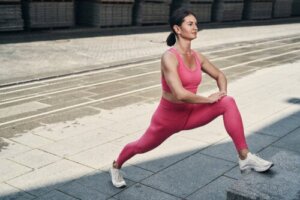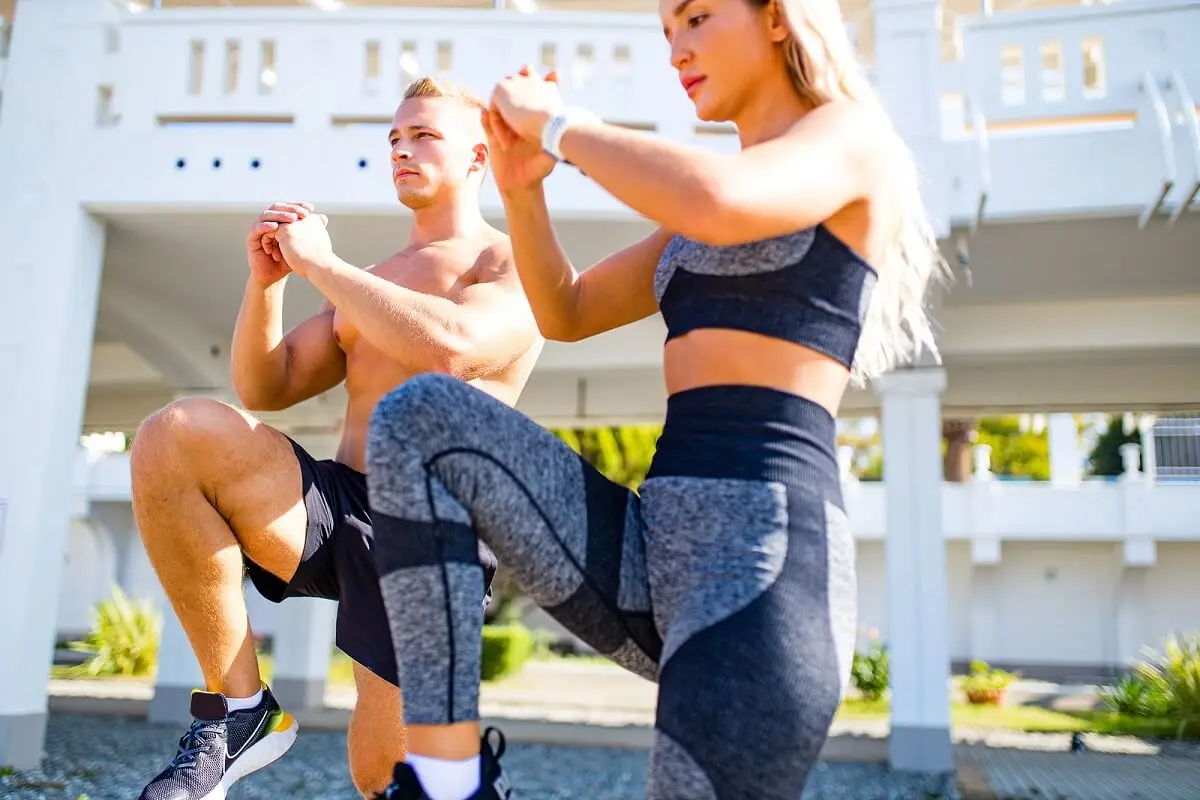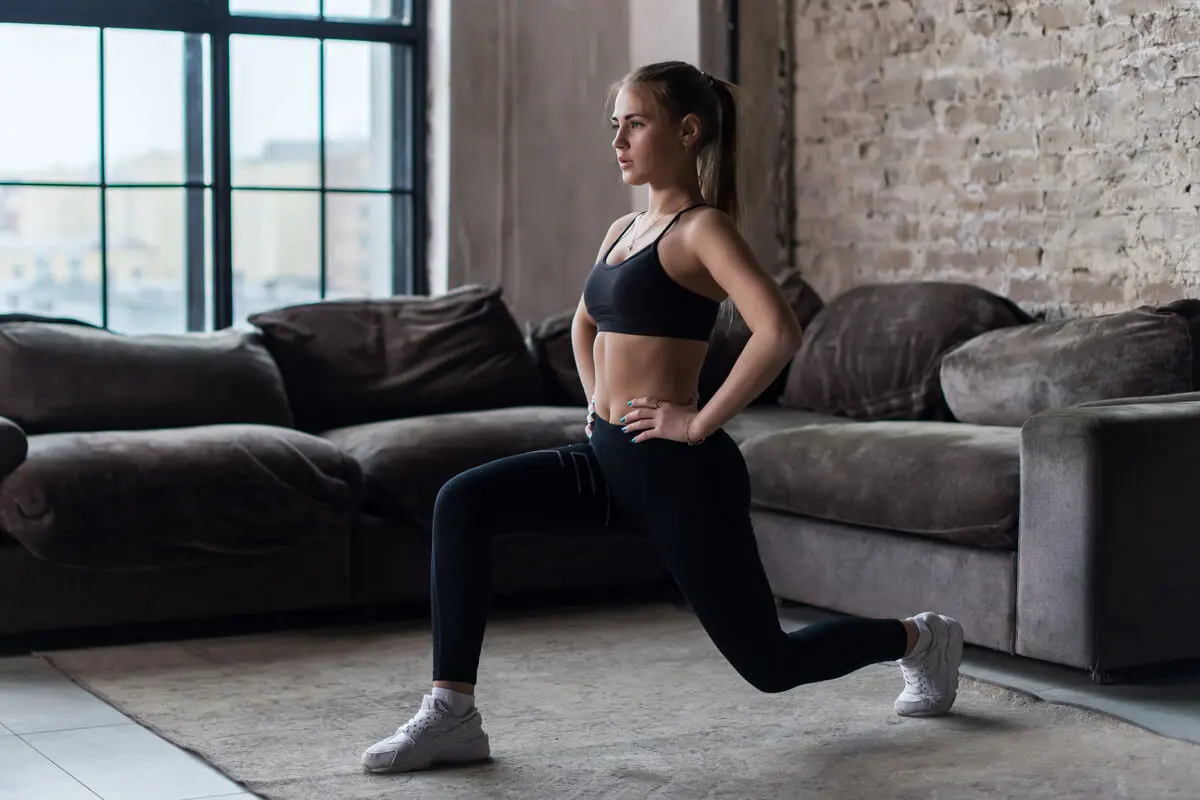Quick Warm-Up: 7 Dynamic Stretching Exercises


Reviewed and approved by the nurse Leidy Mora Molina
When doing any training routine, warming up your muscles before you start is especially important. By doing so, you prepare both the body and the mind for the activity. In this article, we’re going to share some dynamic stretching exercises with you. Find out what we mean by “dynamic”, and we’ll also tell you which we recommend the most. Don’t miss it!
To begin with, it’s important to know that this type of activity is essentially very simple and doesn’t require much time. However, they have a significant impact on cardiopulmonary levels, and are useful for injury prevention.
7 dynamic stretching exercises for a quick warm-up
Dynamic stretching is carried out with fluid, controlled movements. You don’t need to apply resistance in any position. Its main function is to elongate the muscle fibers to prepare the body before a more demanding physical activity.
Unlike static stretching, it’s able to increase muscle strength and flexibility. Fancy trying them? Here are 7 great exercises!

You may be interested in: 7 Stretches for Low Back Pain
1. Feet up
This is one of the quick warm-up routines most recommended by experts, as it helps to increase blood flow.
- Start off standing, with your back straight and your legs apart.
- Take one of your feet and lift it to waist height. To do this, bend your knee sideways.
- Do this smoothly and switch feet with each repetition. Simultaneously, stretch your arms before and after the movement with your foot.
- Repeat the entire exercise 10 times.
2. Rotations
This exercise can be applied to specific areas of the body, or all of them together. For example, the neck, shoulders, trunk, knees, and ankles.
- It consists of rotating the selected part, with a circular motion in a clockwise direction and then in reverse.
- Practice three repetitions on each side of your body.
3. Leg stretches
- The goal is to stretch your legs lengthwise so that they’re one behind the other. Bring your left leg back until your toe is touching the floor.
- Both legs should be bent and then raise your left arm by extending it above your head.
- Then, return both legs to the central axis of the body so that the one that was previously in front goes backwards and vice versa.
- Alternate stretching your arms as you switch legs. Performing 5 to 8 repetitions will effectively prepare your body.
Read more here: CrossFit or the Gym: Which Is Better?
4. Controlled breathing
In this quick warm-up, the focus should be on your breathing; that is, inhaling and exhaling air deeply as you perform small movements. In any of the other exercises, you have to control the flow of air, but in this one, it’s the main focus of the stretch.
- Take a deep breath and simultaneously raise your arms. Then, bend one leg forward.
- While bending your knee, expel the air you have been holding.
- Do 6 repetitions.
5. Holding hand
- You start this dynamic stretch standing up. Then, move one of your legs backwards, and, then use the hand on the same side as the leg to hold the instep or the top of the foot.
- At the same time, stretch the arm on the other side upwards.
- The idea here is that you return the arm and leg to their initial positions and carry out the same movement on the other side.
- You can do this about 5 times on each side.
6. Stride
- Bend your elbows at chest level, and then perform a simple stride, which consists of advancing or holding back one of your legs.
- The leg in front of you bends to a 90-degree angle.
- Ideally, you should be able to change the position of your knees on each repetition.
- Perform up to 10 repetitions.

7. Front kick
- In a standing position, choose one leg to stretch to the maximum height with respect to your hip, while stretching the opposite arm forwards.
- It’s important for you to control the lowering of the leg in order to be able to lift the other leg and repeat the movement about 5 times. In this stretch, you simulate a kick with your leg.
Tip for an effective quick warm-up
The purpose of these simple exercises is for you to perform them correctly with as little effort as possible, but, at the same time, with the knowledge that you’re benefiting your body with each stretch.
This quick warm-up is a preparation for exercise and, as such, shouldn’t be too strenuous. This means they should be simple steps in short intervals of time. Of course, you should always pay attention to what your body is telling you. If you feel you aren’t warming up enough, you can extend the time or repetitions.
In order to know if you have warmed up effectively, make sure your joints and muscles feel more flexible. If so, you’ll feel that the range of motion in every part of your body has increased and is developing more freely and with less muscle tension.
All cited sources were thoroughly reviewed by our team to ensure their quality, reliability, currency, and validity. The bibliography of this article was considered reliable and of academic or scientific accuracy.
- Iwata M, Yamamoto A, Matsuo S, et al. Dynamic Stretching Has Sustained Effects on Range of Motion and Passive Stiffness of the Hamstring Muscles. J Sports Sci Med. 2019;18(1):13-20. Published 2019 Feb 11.
- Sanchez J, Rodriguez A, Villa G, Petisco C, Ramirez R, Gonzalo O. Efecto de un calentamiento con estiramientos estáticos y dinámicos sobre el salto hotizontal y la capacidad para repetir esprint con cambio de dirección. RICYDE. 2017; 13 (47): 26-38.
- Serrabona M, Andueza J, Olivera R. 1001 ejercicios y juegos de calentamiento. Tercera edición. España: Editorial Paidotribo; 2004.
- Ramos J. El calentamiento general y específico de educación física: ejercicios prácticos. Primera edición. España: Editorial cultiva; 2009.
This text is provided for informational purposes only and does not replace consultation with a professional. If in doubt, consult your specialist.








